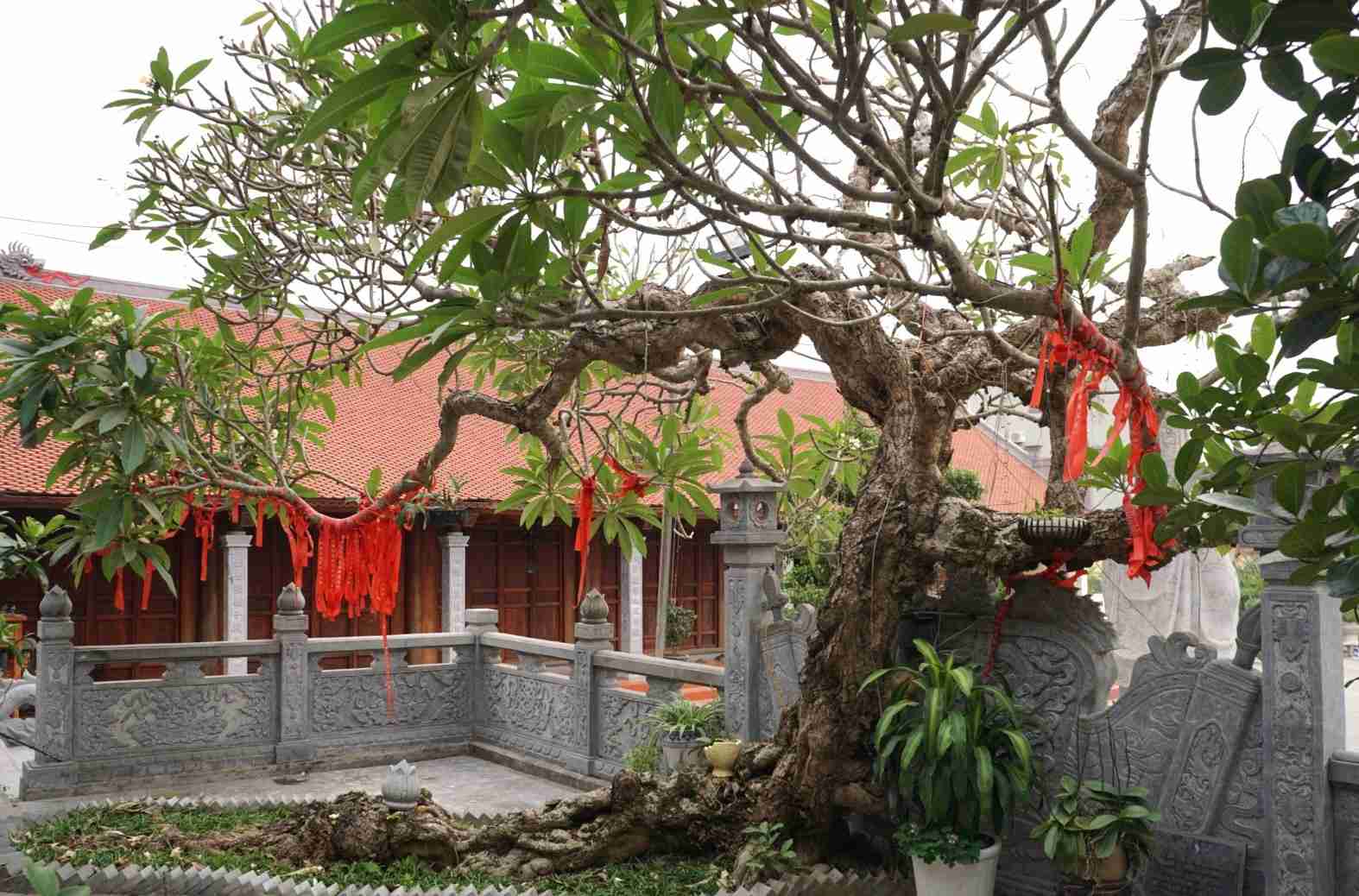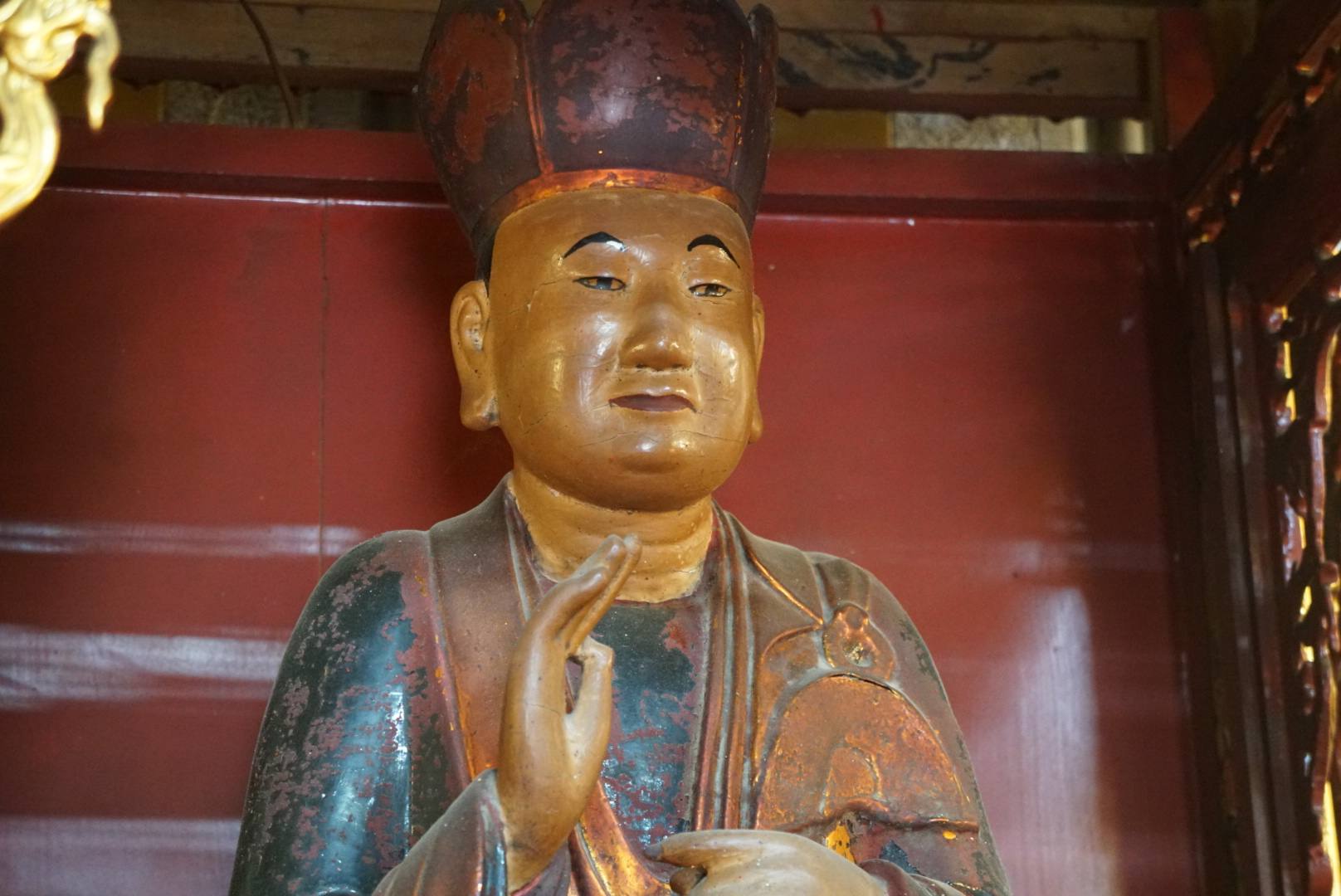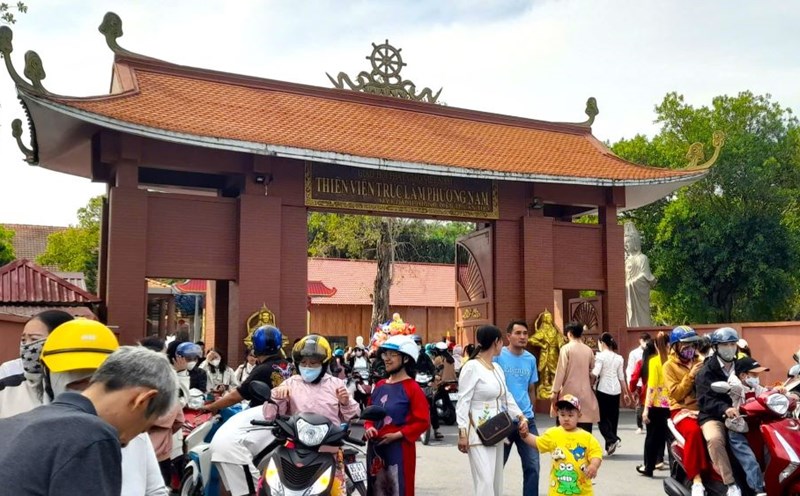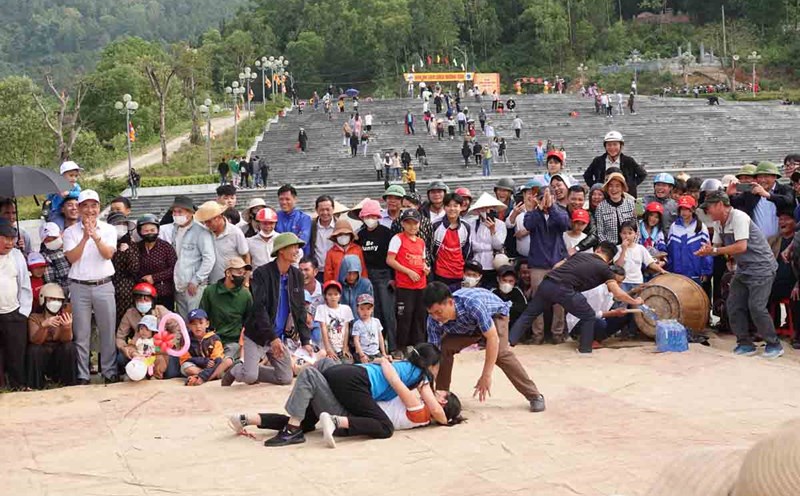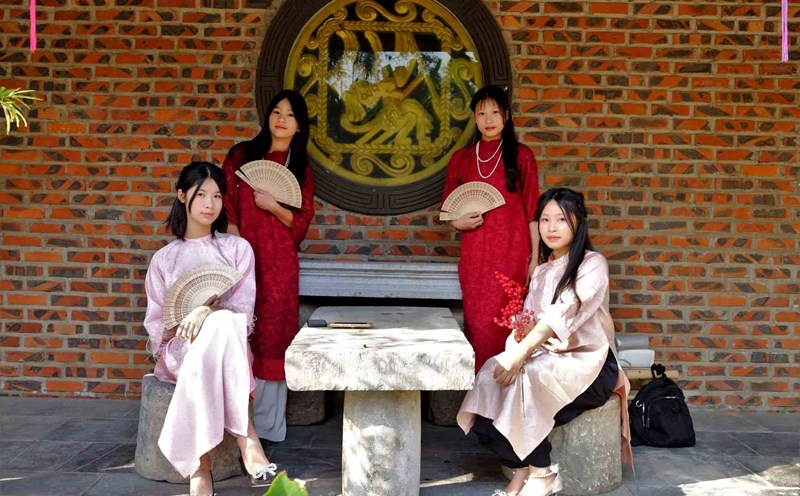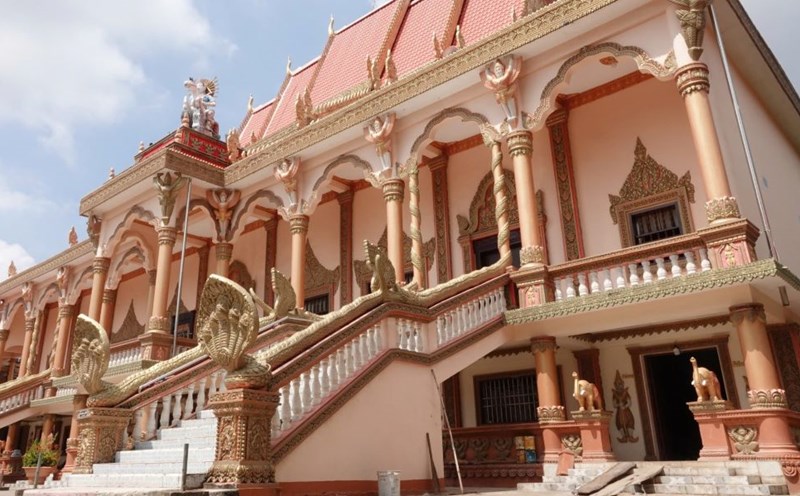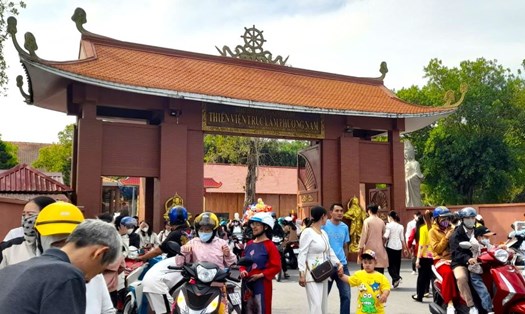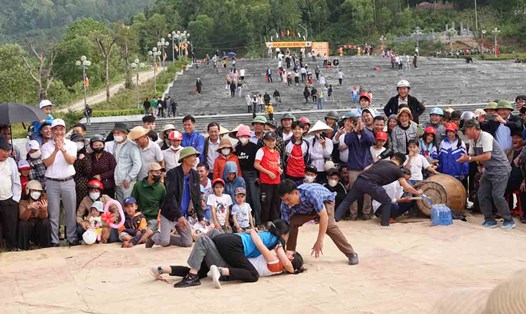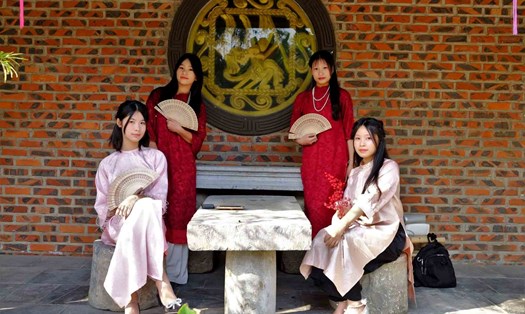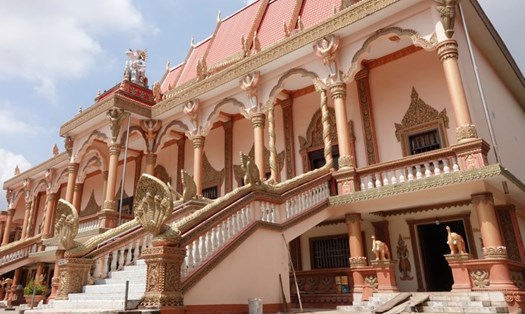Cuong Xa Pagoda was built around the 1st - 3rd century, located on a high hill to the southwest of Cuong Xa village, Tan Hung ward, Hai Duong city, Hai Duong province.
Cuong Xa Pagoda is also called Quynh Khau Tu (Jade Hill Pagoda). In folklore, there is a saying that the first is the pile of leather, the second is the pile of rice, the third is the pagoda, so the pagoda is called Quynh Khau Tu, Khau Tu is the pile of jade, Khau Tu Pagoda is the Pagoda on the pile of jade.
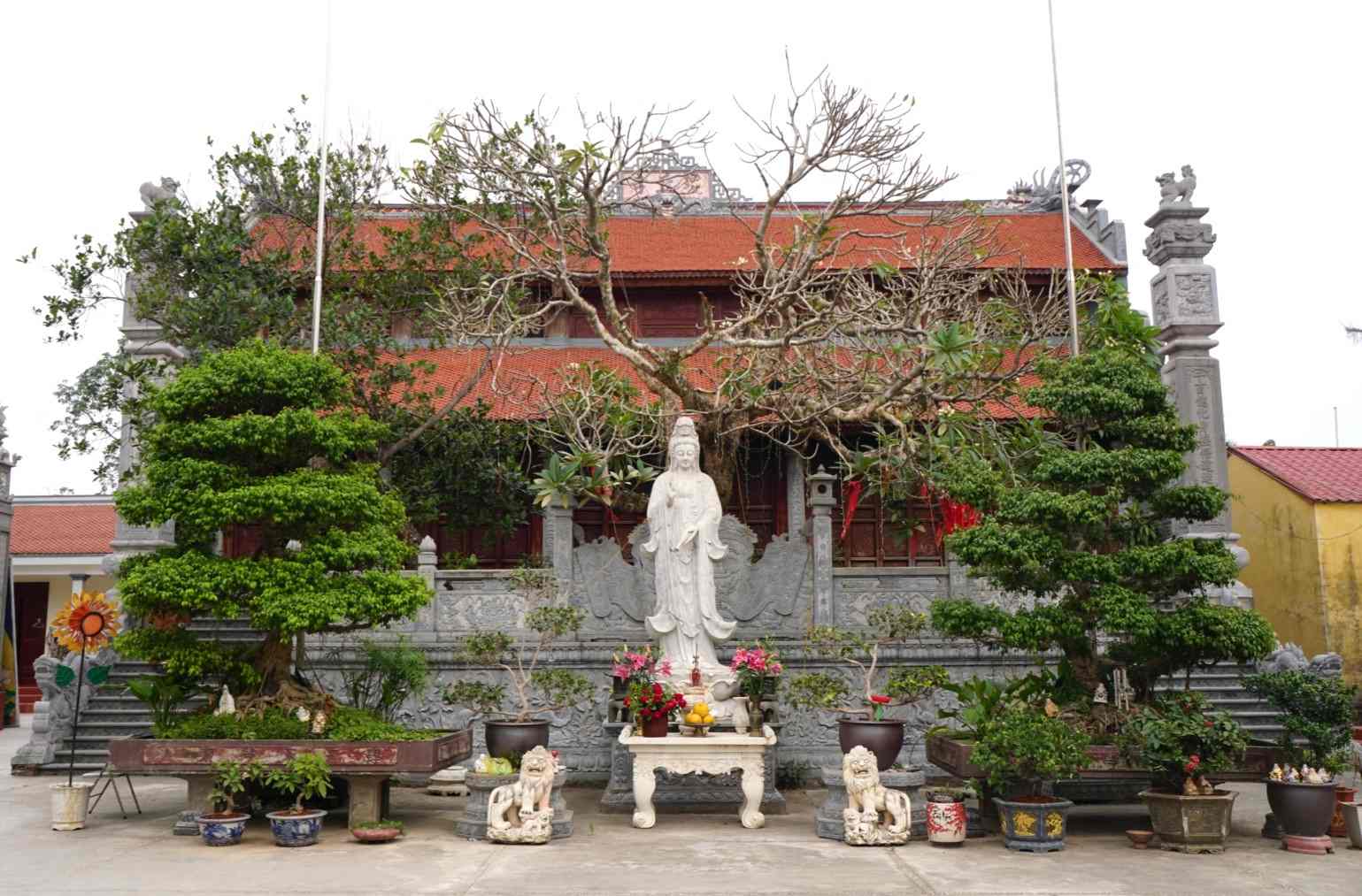
According to the stele at the pagoda, the pagoda was first restored in the 9th year of King Le Vinh To's reign (1627). Through two resistance wars against French colonialism and American imperialism, the pagoda experienced ups and downs and was seriously degraded. In 1946, the people restored the pagoda for the second time.
Cuong Xa Pagoda consists of 5 main rooms, 3 rear rooms, on the right there are 5 rooms for worshiping the Ancestors, on the left there are 5 rooms for worshiping the Mother Goddess and the Buddha, built on a total area of over 7,000m2 of land.
It is known that all the stones used to build the pagoda were taken from Nhoi Mountain (Thanh Hoa). In particular, the three rows of stones from the pagoda's foundation up, each stone is shaped like a lotus flower. From the fourth row to the roof, each stone is carved with a swastika, a total of 3,998 characters in the whole pagoda, creating a unique and distinctive feature for this ancient temple with a long history.
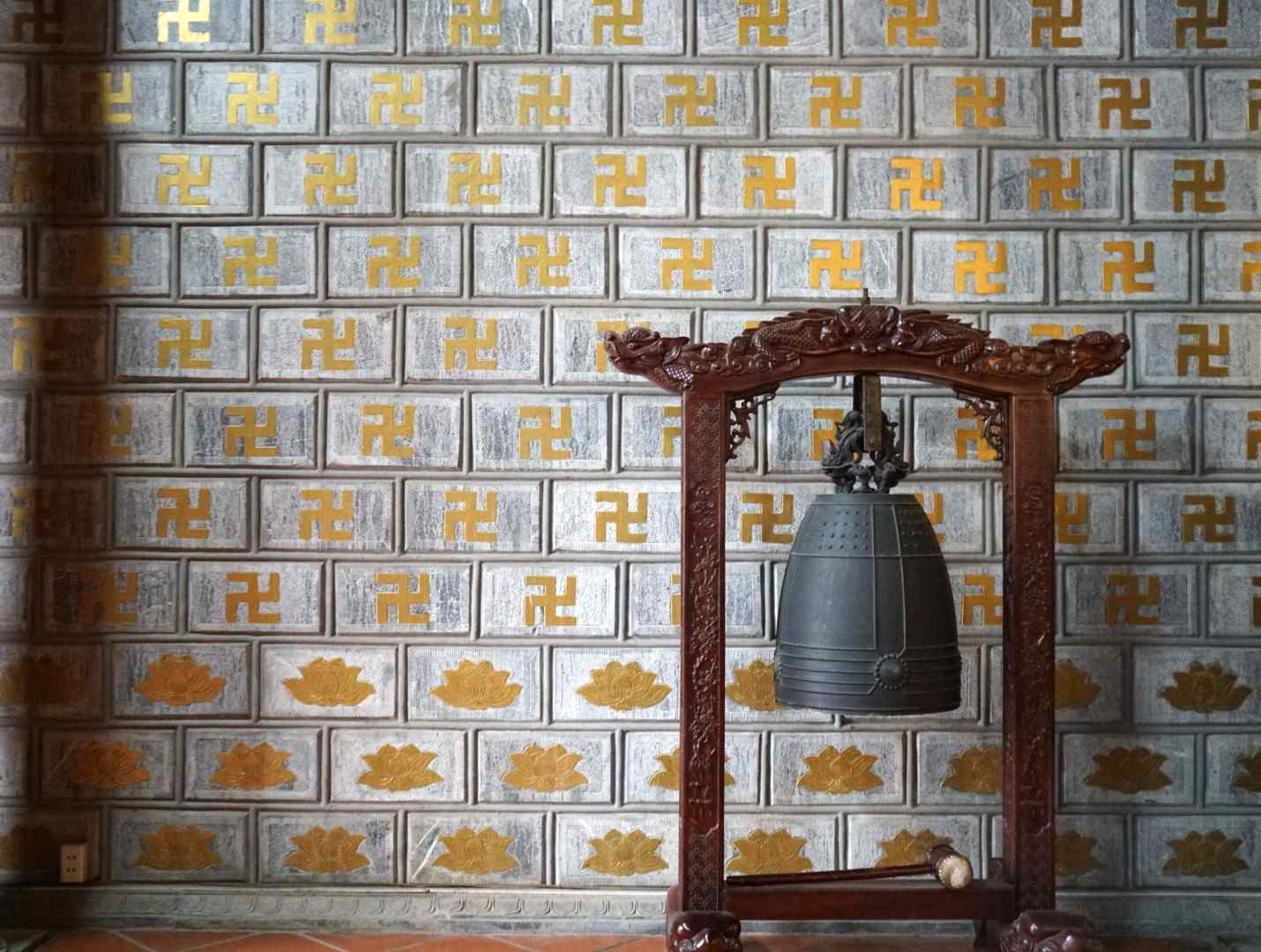
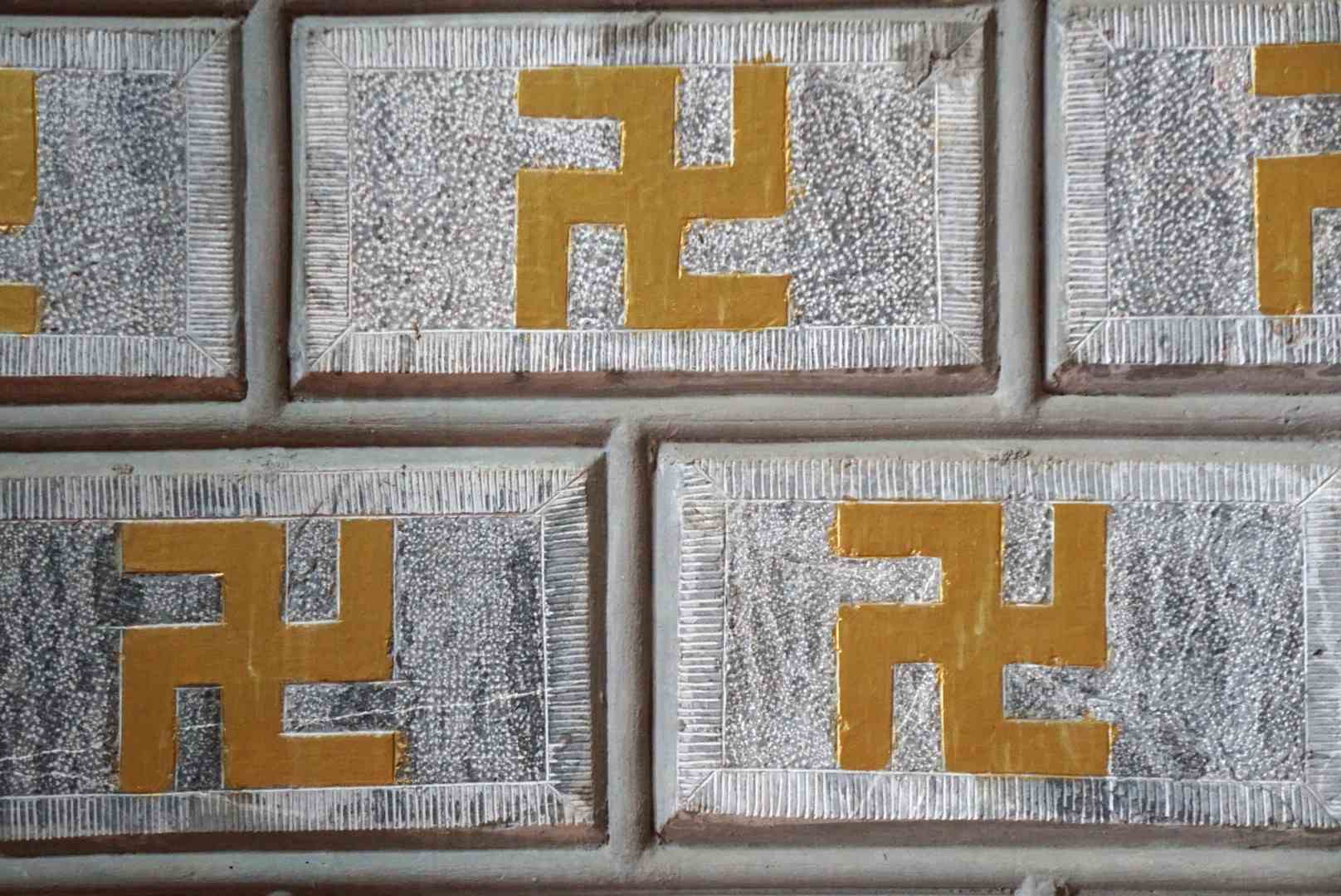
According to monk Thich Thanh Cuong - Abbot of Cuong Xa Pagoda, Buddhism was transmitted from India to Vietnam and has had the lotus symbol since the birth of Buddha. Legend has it that when he was born, he took seven steps on a lotus. The pagoda uses the lotus symbol to make the first three rows of stones from the foundation. From the fourth floor up, the swastika is carved, symbolizing the Buddha emitting a halo to guide those with a predestined relationship with Buddhism.
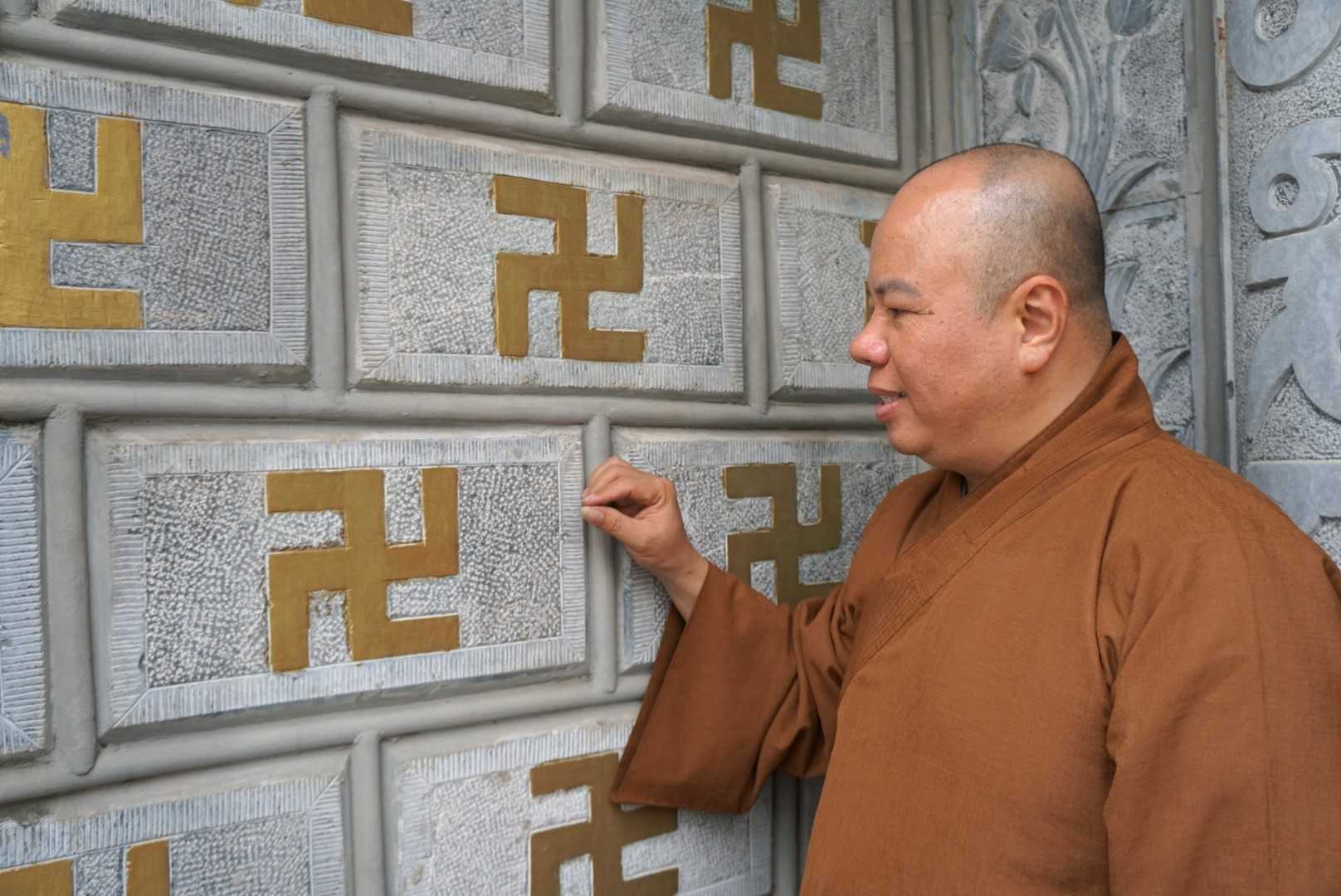
In 2015, Cuong Xa Pagoda received a record certificate as the first pagoda in Vietnam to have a system of stone walls engraved with the word "Van" awarded by the Vietnam Record Organization.
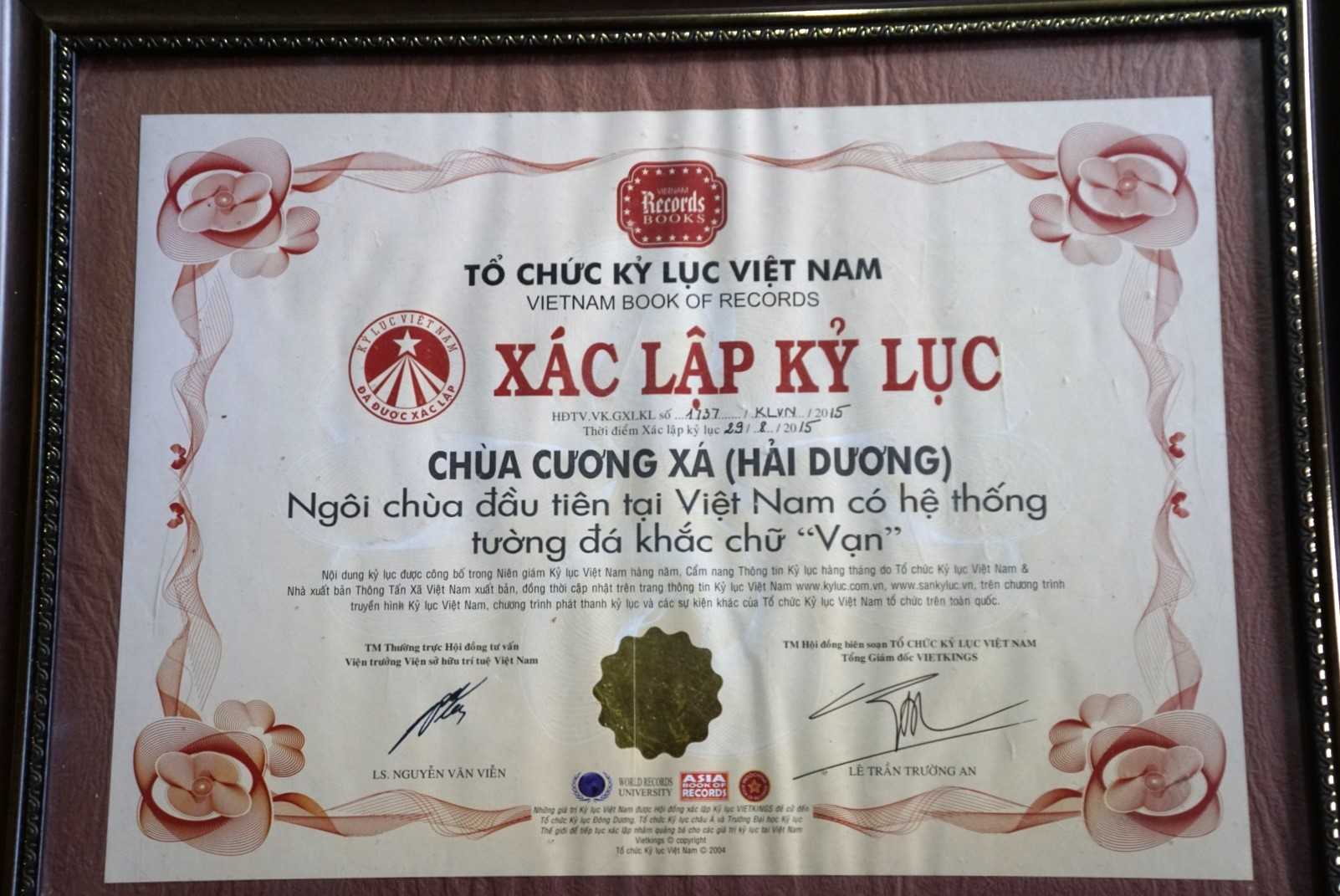
Besides the unique system of stone walls carved with swastikas, Cuong Xa Pagoda also preserves many ancient statues from the Le Dynasty, a 500-year-old banyan tree with a dragon-shaped waterfall associated with many changes of the pagoda.
